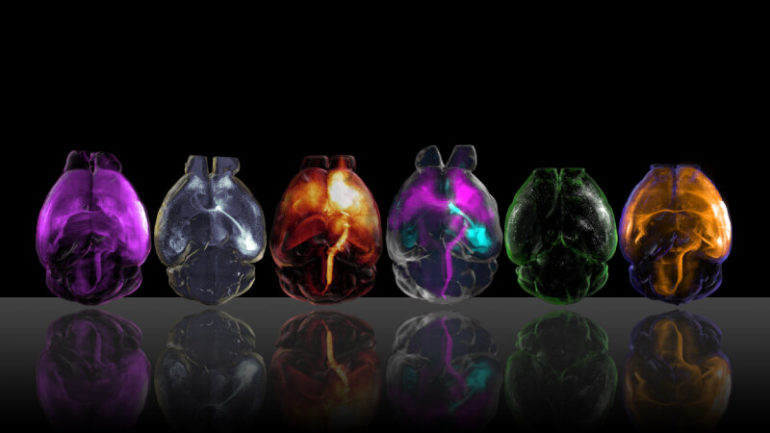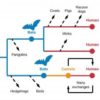Building on recent work, researchers including Danny Winder, director of the Vanderbilt Center for Addiction Research have developed a clear picture of how particular circuitry in the brain may be involved in drug- and alcohol-seeking behavior. They derived a control network for the bed nucleus of the stria terminalis, a part of a larger brain region sometimes called the extended amygdala.
The researchers used light sheet microscopy, a technique that enables rapid and three-dimensional imaging of the entire brain, to review every part of the brain that connects to the BNST circuit. These studies were done in parallel with studies exploring the activity of this circuit. By exploring the activity of this circuit in association with a brief stressor (restraint), rather than lengthy alcohol abstinence assays, they were able to accomplish in two and a half days what would have otherwise taken 15 years.
Through this analysis the researchers could trace the relationship of inputs and outputs to confirm how the circuit works. Surprisingly, the study revealed the top regions of the brain that control the BNST network are the motor and premotor cortices, which are involved in execution and planning of movement.
The motor cortex in the brain plays a major role in virtually every move we make and affects other aspects of our lives in unexpected ways. For example, we can’t tickle ourselves because this part of our brain tells us that skin is about to be touched, we have a smooth visual field because the motor cortex tells the occipital cortex that our eyes are moving and anticipates where we’re going to look next. Movement is the most important and basic principle of animal biology, and systems must work together to make that happen, Winder said.
“We are beginning to see now how the motor cortex inputs impact brain circuits involved in potential relapse to drug- and alcohol-seeking behavior,” said Winder, also Bixler-Johnson-Mayes Professor of Molecular Physiology and Biophysics, Pharmacology, and Psychiatry. “We suspect there are multiple ways that this process can be regulated, both positive and negative. Whereas exercise might have positive impact on sobriety, other motor activity may coordinate with inputs to this region of the brain that have an adverse effect.”
The research also emphasizes the impact that advanced neuroscience tools are having on the field over the past decade. The light sheet microscope allowed us to stop looking “under the lamppost,” Winder said. “By using a higher throughput unbiased approach, we have opened a new area of neurobiology—the connection of motor cortex with affective circuitry.”
Winder expects to dive into this work to understand and describe how this affective circuitry works to describe phenomena like “runner’s high.”
Ultimately, this early work may lead to collaboration with genomics and proteomics experts to look for novel targets on the input affecting the motor cortex, to think about activity in a new light. The research suggests that movement and exercise could become a prescription.
Neuroimaging discovers alterations in brain circuits that contribute to alcohol addiction
More information:
Joseph R. Luchsinger et al, Delineation of an insula-BNST circuit engaged by struggling behavior that regulates avoidance in mice, Nature Communications (2021). DOI: 10.1038/s41467-021-23674-z
Provided by
Vanderbilt University
Citation:
How the motor cortex influences stress responses in brain regions involved in drug- and alcohol-seeking behavior (2021, June 25)
retrieved 25 June 2021
from https://medicalxpress.com/news/2021-06-motor-cortex-stress-responses-brain.html
This document is subject to copyright. Apart from any fair dealing for the purpose of private study or research, no
part may be reproduced without the written permission. The content is provided for information purposes only.



